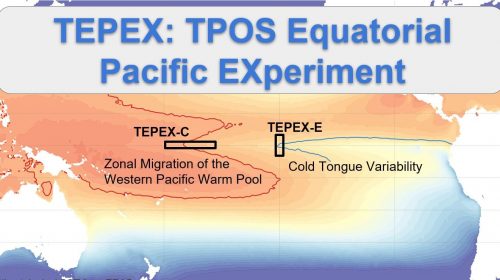The rapid decline of Arctic sea ice, a trend visible for each month of the year over the last four decades, has become one of the clearest signals of a warming world. Most climate models predict this warming will lead to the first occurrence of ice-free summers in the Arctic sometime in the 2030s-2040s, in response to the rise of anthropogenic greenhouse gases in the atmosphere. However, the range of when an ice-free Arctic Ocean will likely occur and the rate of decline in sea ice cover is heavily influenced by variability of the climate system that is believed to be partially driven by natural sea surface temperature variability in the tropics and extratropics. Past studies, attempting to understand the extent of this contribution, have suggested that internal variability may have accounted for 30-50% of Arctic sea ice decline over the past 40 years through impacts on large-scale atmospheric and oceanic processes in and around the Arctic. However, it is unclear whether there exists an optimal internal mode that favors the strongest sea ice decline in the Arctic and the key mechanism through which this mode regulates sea ice variability.
In a new Journal of Climate article, MAPP and CVP-funded authors Ian Baxter and Qinghua Ding conduct a set of nudging simulations by specifying observed winds into a fully coupled model to assess the sensitivity of the sea ice response to different wind patterns.
The study reveals wind impacts on sea ice are primarily thermodynamic, not dynamic, resulting from subsidence-driven warming of the lower troposphere and the surface ice-albedo feedback. In addition, the optimal atmospheric mode that is associated with melt in all datasets is a summertime “Figure-8” high pressure centered over the Arctic and extending over Greenland (fig. 1). Authors note that the models show that the most extreme climate scenario that could cause an abrupt significant sea ice melting epoch is a multi-year-long persistence of the summertime high-pressure circulation pattern in the Arctic that enhances a prolonged sea ice-albedo feedback. This pattern can dramatically increase the sea ice sensitivity to internal variability and induce significant Arctic warming.

Figure 1. June-July-August 200 hPa geopotential height. summertime “Figure-8” quasi-barotropic anticyclone centered over the Arctic and extending over Greenland.
The same process with an opposite sign may also cause a strong recovery of sea ice and a temporary Arctic cooling. The main driving force of this type of persistent anticyclonic circulation pattern in the Arctic remains an important source of uncertainty in projecting future sea ice change. The authors note that the nudging approach allowed them to control for this uncertainty locally within the Arctic, and to directly quantify this relationship using observed atmospheric circulation patterns that could be applied to remote Arctic teleconnections in the future.
Funding for this project was provided in part by the NOAA Climate Program Office, MAPP program and Climate Variability and Predictability (CVP) program.
Read the full study here.








